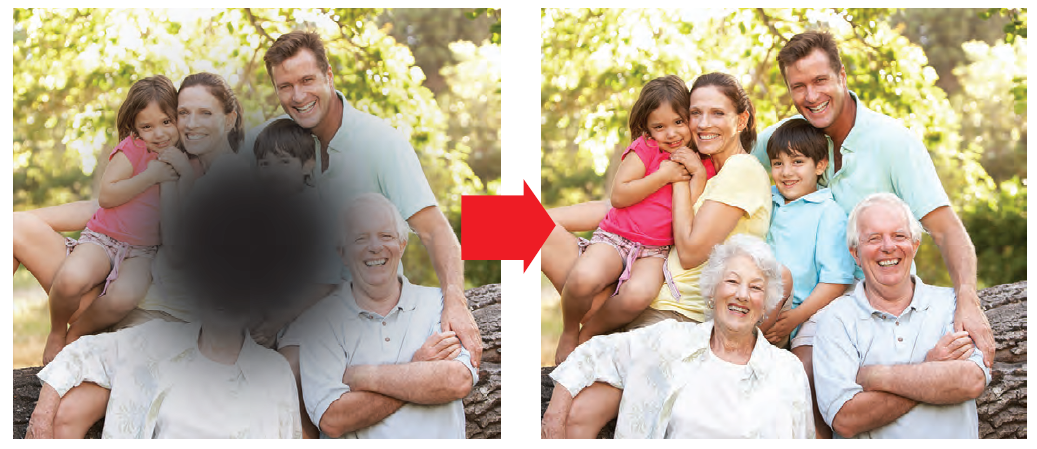By Bonnie Jenkins
A few night’s ago, I happened to run into my son’s best friend – someone I hadn’t seen in years. While it was a wonderful surprise, I have to admit that I was shocked to see that this 20-something “kid” was going bald!
Most of us think of hair loss is mainly an older man’s problem. Yet two out of three men will experience some degree of balding by the time they’re 50. And the problem certainly isn’t limited to the male species. In fact, while 40 million men are affected by thinning hair or hair loss, 20 million women find themselves in the same boat. The difference, however, is that men typically experience a receding hairline or balding at the crown. Women, on the other hand, see thinning hair around the top and sides of their head.
But, even though hair loss isn’t usually a sign of a more serious condition, it can take a heavy emotional toll. And it doesn’t matter if your male or female, old or young.
Heading for Trouble
We all lose some hair every day. In fact, the average person loses somewhere between 50 and 125 strands of hair a day as a normal part of “shedding.” This may seem like a lot, but lost hairs are replaced so quickly that we barely notice their departure. It’s when you begin to lose more than this number on a regular basis that you may be headed for permanent hair loss.
If you’re finding an unusual amount of hair in your hairbrush or the shower drain, you may be suffering from the first signs of androgenetic alopecia – the clinical term used to describe male or female pattern hair loss. Androgenetic alopecia accounts for 95 percent of all naturally-occurring baldness in the U.S. and can be squarely blamed on the male hormones known as androgens.
Here’s how it works: As a man ages, levels of the primary androgen – testosterone – decrease. This testosterone shortfall tells the hair follicles to release an enzyme called 5 alpha reductase Type II, a precursor to another enzyme called dihydrotestosterone (DHT). DHT shrinks the hair follicles and causes them to go into a permanent state of rest. Since women also produce some testosterone, they’re susceptible to this process too, but estrogen offers some protection from the advances of DHT – at least until menopause.
MD Exposes the Hidden Danger to Your Eyes

When your eyesight starts to fail, it's a real problem. Suddenly you can't go to the grocery store... you can't get to the doctor if you have an emergency... you can't meet your friends for dinner…
Your "regular" doctor doesn't have time to keep up with the latest research. And the same goes for eye doctors. They go to school to learn how to fit you for glasses and contacts, but have no way of preventing the damage and loss of eyesight that threatens your freedom and independence.
Let me show you something that explains a LOT about how your eyes work.
In my FREE Special Report, I'll show you a HUGE, untapped resource for your eyes that safely and naturally restores clear, effortless eyesight.
Click here to get started...
While hormones are responsible for most hair loss, how you treat your hair can also contribute to balding – and this is particularly true for women. According to the American Academy of Dermatology, too many chemical treatments such as dying, straightening and bleaching, as well as excessive washing, towel drying and brushing, can weaken or damage your hair, causing it to break or fall out.
Stemming the Fallout
Hair loss has become big business. In fact, there are at least 40 U.S. patents for hair loss treatments that promise you a full head of hair. The problem is, there’s no actual “cure” for baldness – although that isn’t what you’ll hear from the dozens of TV ads promoting those special creams, sprays, combs or hair growth systems. Even modern medicine has gotten in on the act with two pharmaceuticals claiming to halt hair loss and encourage regrowth.
The first is Rogaine, a topical over-the-counter treatment that gained huge popularity several years ago – at least until users discovered that it doesn’t help everyone grow hair. Only 26 percent of men under 50 experience significant hair regrowth and 41 percent of both male and female users don’t benefit from any regrowth at all. Those that do regrow hair find that their new hair is of poor quality. And if you stop using the drug, all of that regrowth disappears. Rogaine can also result in some very unwanted side effects, including skin irritation, swelling and hives. More seriously, extra-strength Rogaine has been shown to cause heart enlargement and heart muscle damage.
Propecia is another treatment approved by the FDA for hair loss. Like Rogaine, Propecia also poses potentially serious health risks. Women of childbearing age are excluded from using this medication since even handling the tablets can cause birth defects. Other side effects include the loss of sex drive, erectile dysfunction and a decrease in the volume of ejaculate. For most guys, this is enough to make them look elsewhere.
And like Rogaine, Propecia only works as long as the medication is continued. Since Propecia costs about $130 a month, this long-term proposition isn’t cheap.
Help for Hair Loss
Fortunately, there are a great many things you can do to hold off hair loss and for a lot less money. Best of all, even though you won’t find a miracle cure, treating hair loss holistically is considerably safer than the prescription drugs doctors often recommend.
Good nutrition can go a long way in helping you hang on to your hair. The B vitamins, especially biotin, are crucial to healthy sebum production and new cell generation and biotin deficiencies have been linked to hair loss. You can get biotin from sardines, soy, whole grains, nuts and beans.
Are You Suffering From...
- Love handles and a pot belly
- Romance that isn't what it used to
- Forgetfulness and inattention
- Low (or no) strength and endurance
- A sex drive that's shifted into neutral...or worse
If so...you may have Mature Male Burnout. Click here to discover more about this unique condition and what you can do about it.
Essential fatty acids are also important for healthy hair. They can be found in cold-pressed olive oil, flax seeds, pumpkin seeds and marine fish oils.
Good circulation is also key to healthy hair. Vitamins C and E, and CoQ10 can help improve scalp circulation – as can a daily scalp massage. You can find vitamin C in Brussels sprouts, citrus fruits, cranberries, mango, broccoli and tomatoes. Wheat germ and egg yolks are rich in both vitamin E and CoQ10.
Eating more soy may also help prevent hair loss. According to a study by German researchers, soy may modulate estrogen and inflammation to give some protection against alopecia. Researchers at Colorado State University have also found that a newly discovered molecule called equol, is produced when the body digests soy. In trials, equol helped block the action of DHT, preventing the physiological hormone responses regulated by the androgens responsible for hair loss.
One Last Thing . . .
Since DHT contributes to hair loss and benign prostatic hyperplasia (BPH), many herbalists attack both with the same weapon – saw palmetto. The active compounds in saw palmetto, free fatty acids and phytosterols, are thought to reduce the effects of DHT by inhibiting the enzyme 5-alpha reductase – much the same way Propecia does, but without the adverse side effects.
The Chinese herb, He Shou Wu, has also been used for centuries to treat hair loss. According to Asian researchers, He Shou Wu is high in antioxidants and herbalists believe that this herb not only provides essential nutrients for hair growth, it increases circulation to the scalp. He Shou Wu also reportedly banishes the gray from the hair you have left!
Another traditional herbal remedy involves a rinse made with apple cider vinegar and rosemary “tea.” Simply mix 8 ounces of the herbal tea with 2 tablespoons of the vinegar and use as a daily rinse. Anecdotal reports claim that this natural remedy encourages new hair growth and strengthens existing hair.
This Just In . . .
Need another reason to eat more colorful fruits and veggies? How about two?
It seems that researchers from The University of Manchester’s Medical School have discovered that eating more red, yellow and orange fruits and vegetables may help reduce the risk of developing inflammatory disorders like rheumatoid arthritis. The Manchester team analyzed the health questionnaires and diet diaries of more than 25,000 45- to 74- year-olds.
The investigators then followed the participants for the next nine years. What they found truly highlights the importance of eating a colorful variety of foods: The average daily intake of beta-cryptoxanthin – one of the pro-vitamin A carotenoids found in red, yellow and orange fruits and vegetables – among the 88 patients who developed rheumatoid arthritis was 40 percent lower than those who stayed healthy. This lead the researchers to speculate that these this obscure carotenoid might also help protect against other inflammatory joint diseases like osteroathritis.
Beta-cryptoxanthin may also help reduce the risk of lung cancer – which could be good news for former smokers. A recent analysis of six prospective cohort studies by researchers at Harvard School of Public Health found that people with the highest consumption of beta-cryptoxanthin had a 24 percent lower risk of lung cancer than those with the lowest intake. And the effect was the same, regardless of whether the subjects were smokers, former smokers or had never smoked.
So the next time you’re in the produce aisle, see red – and yellow and orange! Foods that are particularly rich in beta-cryptoxanthin include pumpkin, cooked sweet red peppers, papaya, orange juice, watermelon and even corn. Bon appetit!
References:
Jankovic SM, Jankovic SV. “The control of hair growth.” Dermatology Online Journal. 1998;4: 2.
Lund RD, Munso DJ, Haldy ME, et al. “Equol is a novel anti-androgen that inhibits prostate growth and hormone feedback.” Biology of Reproduction. 2004;70:1188-1195.
Mannisto S, Smith-Warner SA, Spiegelman D, et al. “Dietary carotenoids and risk of lung cancer in a pooled analysis of seven cohort studies.” Cancer Epidemiology Biomarkers and Prevention. 2004;13:40-48.
McElwee KJ, Niiyama S, Freyschmidt-Paul P, et al. “Dietary soy oil content and soy-derived phytoestrogen genistein increase resistance to alopecia areata onset in C3H/HeJ mice.” Experimental Dermatology. 2003;12:30-36.
Pattison DJ, Symmons DPM, Lunt M, et al.
“Dietary ß-cryptoxanthin and inflammatory polyarthritis: results from a population-based prospective study.” American Journal of Clinical Nutrition. 2005; 82:451-455.
Trüeb RM. “Is Androgenetic Alopecia a Photoaggravated Dermatosis?” Dermatology. 2003;207:343-348





